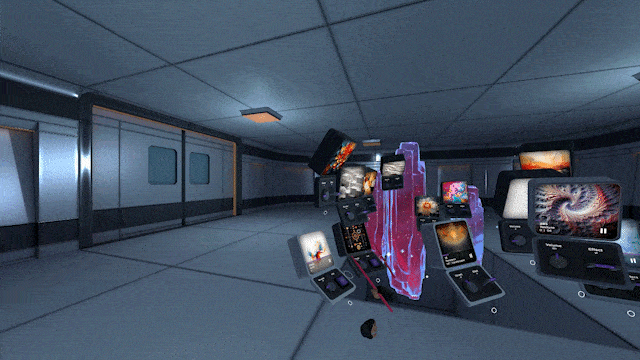NoizBox
Crafting Spatial Soundscapes
Designed & Developed by Ben Westergreen
Personal Project, 2023
Created with Unity Engine for Meta Quest 2 (PCVR)
NoizBox is an experimental virtual reality spatial audio project developed with Unity Engine. It emerged from explorations to create a synesthetic VR experience that celebrates body autonomy and empowers users to connect with rhythm and sound on a personal level.












